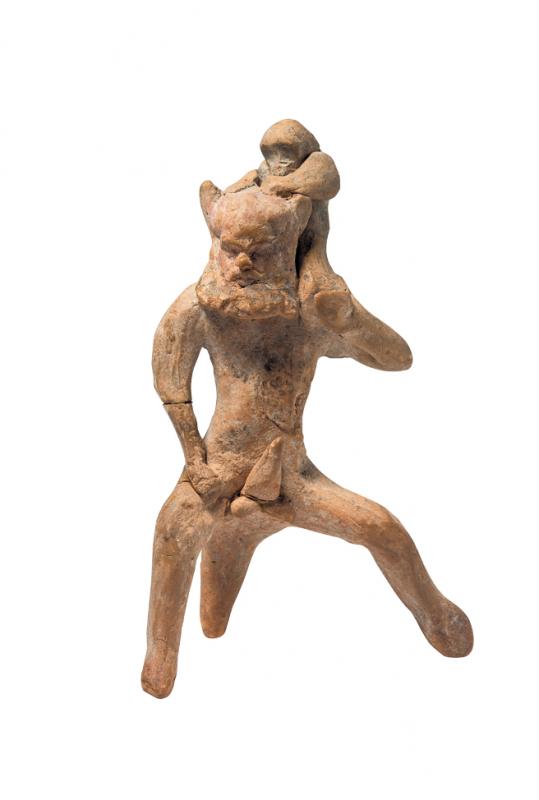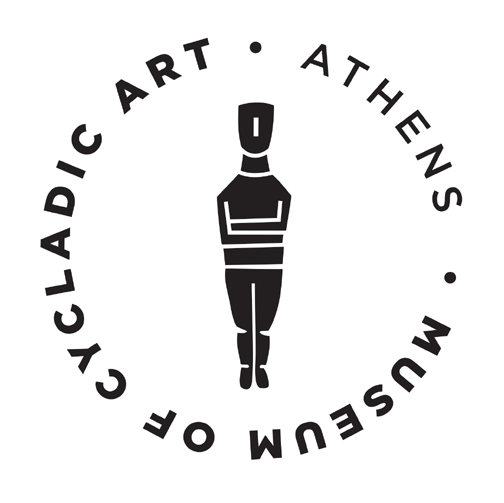
Terracotta group of a Silenus and monkey
Terracotta group of a Silenus and monkey
The figurine represents a sitting Silenus with a monkey standing on his left shoulder and delousing him. It is handmade, except for the face of the Silenus, which was pressed in a mould. Sileni, like Satyrs, were mythical, ithyphallic creatures of hybrid type with human body and head, and equine legs and tail. As is the case with most daemonic figures, they were of ambiguous nature, combining their often savage character and insatiable appetite for pleasures with their wisdom and knowledge of the crafts which were beneficent for mankind. Sileni and Satyrs, which can be differentiated solely by age (the former being older), are not mentioned in the Homeric epics and are regarded as a later addition to Greek mythology. From the 6th c. BC they were members of the thiasos or entourage of Dionysos (together with the Maenads) and assumed the role of the chorus in satyric drama. Figurines of sitting Satyrs were common in Boeotia, Attica and Corinthia during the 6th and 5th c. BC. They belong to a broader category of figurines representing creatures viewed as exotic by the Greek populations. For this reason they are often considered to have had an apotropaic function.





